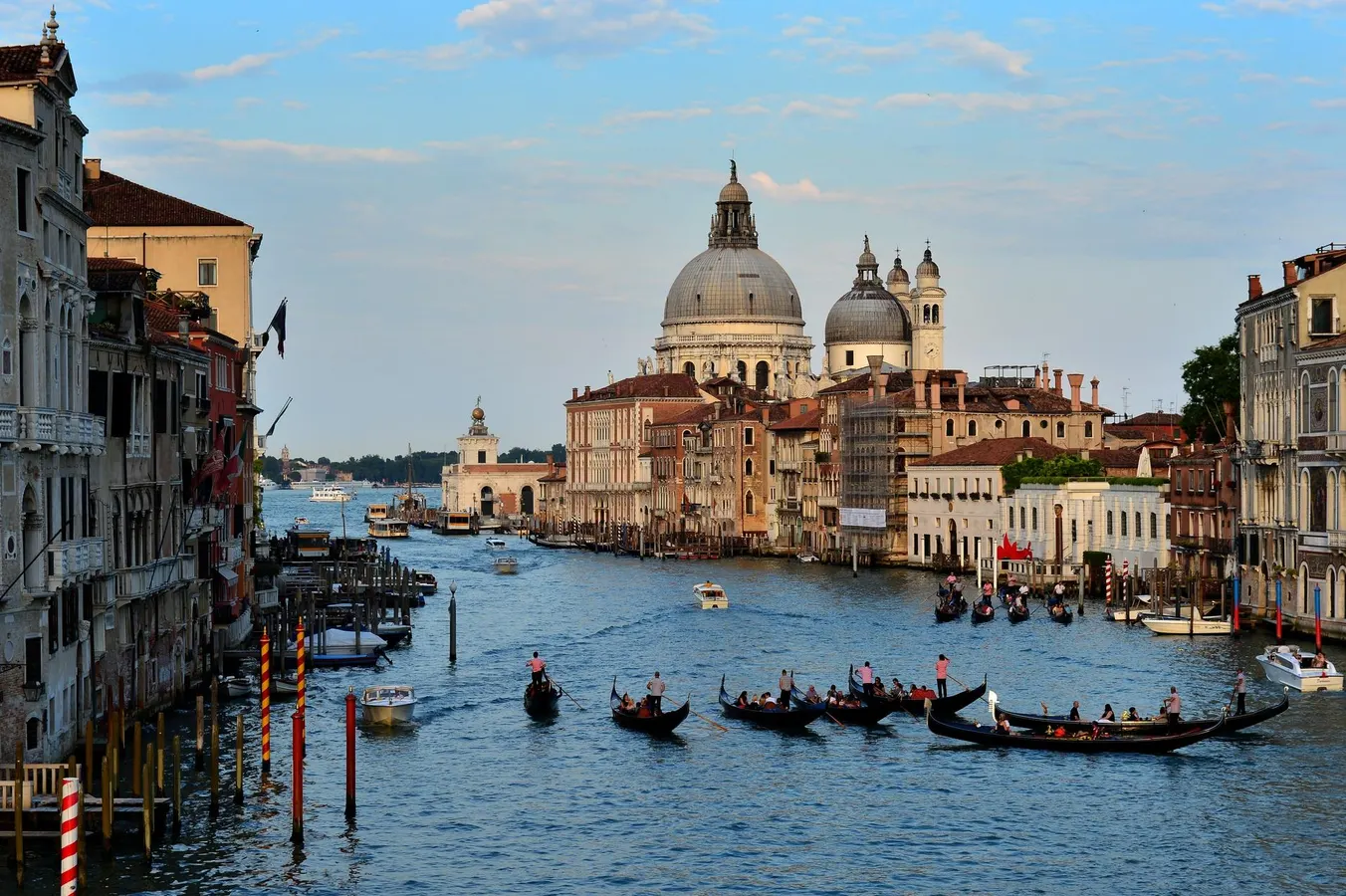By Contributor,Layne Randolph
Copyright forbes

A picture taken on July 10, 2013 show one of the main waterways in Venice. AFP PHOTO / GIUSEPPE CACACE (Photo credit should read GIUSEPPE CACACE/AFP via Getty Images)
AFP via Getty Images
How Venice Became Europe’s Wine Gateway
Ah, Venice. It’s known for its canals, palaces, and Murano glass, yet few travelers realize the city also has a wine story—one nearly erased by saltwater and Napoleon – yes, that Napoleon.
It started in the 5th–6th centuries, when people fleeing waves of invaders on Italy’s mainland were pushed out to the Adriatic’s edge and found only lagoon and sandbars.
With no bedrock, they engineered it. They drove wooden piles into the waterlogged soil. Then they built a city on shifting sand and tide, negotiating daily with salt, silt, and floods. What would have been streets became canals, a useful way to ferry food and provisions through the always-present water—and also a fantastic way to import goods by ship from across the Adriatic and throughout the Mediterranean.
How a Maritime Venice Shaped Europe’s Wine Culture
This proved fruitful for the city once called “La Serenissima” for its wealth and political stability (serenity). From the ninth century onward, Venice was one of the world’s great merchant trade cities. It became known as the Porta d’Oriente—the “eastern gate” of Europe, as its merchant fleets sailed into and back from the Aegean, Adriatic, and beyond, carrying spices, silk, glass, and wine.
ITALY – SEPTEMBER 29: Wagon laden with supplies and barrels of wine, detail from an illustration depicting the Army of Charlemagne and Transportation of Provisions, from a Venetian Codex. Italy, 14th century. Venice, Biblioteca Nazionale Marciana (National Library) (Photo by DeAgostini/Getty Images)
De Agostini via Getty Images
Whizz forward a few centuries, and Venice had turned itself into one of Europe’s richest republics. More than a hub for commerce, Venice became a cultural broker that elevated wine from a farm product into a symbol of refinement, diplomacy, and civilization.
Wine was not just a refreshment in Venice; it was a status symbol. Imagine Venetian envoys carrying amphorae as gifts to courts across Europe and Doges hosting banquets where imported wines demonstrated not just wealth but connection—proof that Venice’s reach stretched to every corner of the Mediterranean.
Venice was not a great wine region, but it was a great broker of wine culture.
Because of its maritime commerce, Venitian merchants propelled wine storage and distribution standards. Amphorae gave way to wooden barrels, and Venetian shipbuilding ensured wines could travel further with less spoilage. In this way, Venice helped transform wine from a fragile, localized product into a commodity that could sustain long-distance trade.
VENICE, ITALY – NOVEMBER 10: People talk on a flooded street near a wine shop on November 10, 2010 in Venice, Italy. High tide or acqua alta as it is more commonly known, stood at 114 centimeters this morning, however two years ago in December 2008 a level of 156 centimetres was recorded in the city. (Photo by Barbara Zanon/Getty Images)
Getty Images
Through Venice, European palates encountered a broader spectrum of flavors—richer, sweeter, and more exotic than the rustic wines of their own countryside. The city became the great broker of taste.
The most famous wine was Malvasia, a sweet, aromatic wine from Greece and the islands of the Aegean with a multitude of genetic and other variations today. It arrived in such volume that Venetian taverns were nicknamed in their Italian plural, “malvasie.”
ITALY – CIRCA 2002: Comrades of malvasia, 18th century, by Giovanni Grevenbroch, engraving. (Photo by DeAgostini/Getty Images); Venice, Museo Correr (Art Museum), Gabinetto dei Disegni e delle Stampe (Drawings and Prints). (Photo by DeAgostini/Getty Images)
De Agostini via Getty Images
The End of an Era in Venice
Then came Napoleon. In 1797, Napoleon conquered northern Italy and dissolved the Republic of Venice, transferring power over it to Austria. Monasteries were dissolved, cloister vineyards broken up, and the bronze Horses of San Marco shipped to Paris. The once-glittering Malvasia routes languished.
Venice, which had brokered Europe’s tastes for centuries, found itself reduced to a narrower, provincial rhythm. The lagoon survived. Its canals still shimmered. But its wine culture, the great cosmopolitan theater of taste, was silenced, almost in a single stroke.
Editorial StandardsReprints & Permissions



